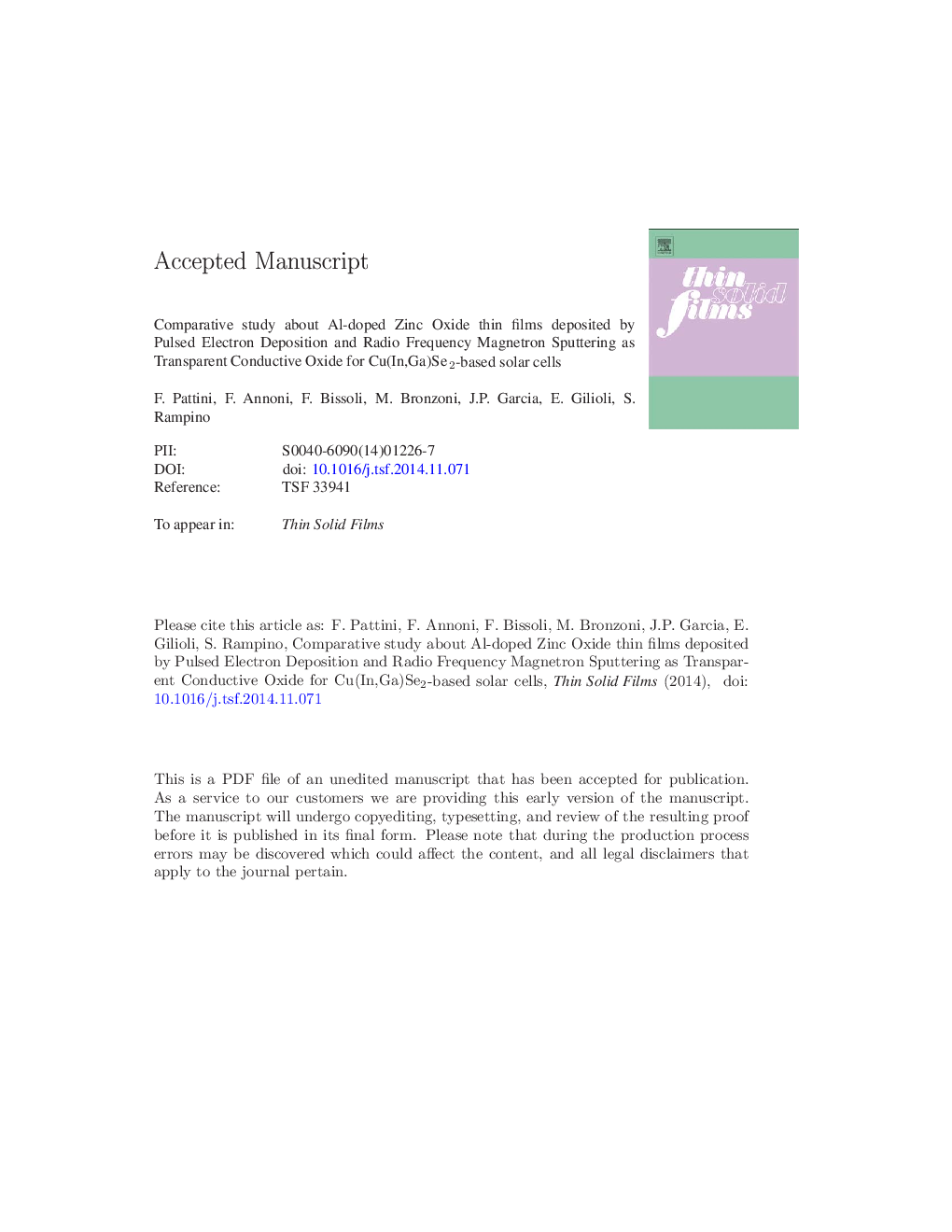| کد مقاله | کد نشریه | سال انتشار | مقاله انگلیسی | نسخه تمام متن |
|---|---|---|---|---|
| 8034454 | 1518023 | 2015 | 19 صفحه PDF | دانلود رایگان |
عنوان انگلیسی مقاله ISI
Comparative study about Al-doped zinc oxide thin films deposited by Pulsed Electron Deposition and Radio Frequency Magnetron Sputtering as Transparent Conductive Oxide for Cu(In,Ga)Se2-based solar cells
دانلود مقاله + سفارش ترجمه
دانلود مقاله ISI انگلیسی
رایگان برای ایرانیان
کلمات کلیدی
موضوعات مرتبط
مهندسی و علوم پایه
مهندسی مواد
فناوری نانو (نانو تکنولوژی)
پیش نمایش صفحه اول مقاله

چکیده انگلیسی
In this study, a comparison between Al-doped ZnO (AZO) as Transparent Conductive Oxide for Cu(In,Ga)Se2-based solar cells grown by Pulsed Electron Deposition (PED) and Radio Frequency Magnetron Sputtering (RFMS) was performed. PED yielded polycrystalline [002] mono-oriented thin films with low electrical resistivity and high optical transparency with heater temperatures ranging from room temperature (RT) to 250 °C. The electrical resistivity of these films can be tuned by varying the heater temperature, reaching a minimum value of 3.5 Ã 10â 4 Ωcm at 150 °C and an average transmittance over 90% in the visible range. An AZO film grown at RT was deposited by PED on an actual Cu(In,Ga)Se2-based solar cell, resulting to an efficiency value of 15.2% on the best device. This result clearly shows that PED is a suitable technique for growing ZnO-based thin films for devices/applications where low deposition temperature is required. On the other hand, an optimized AZO thin film front contact for thin film solar cells was studied and fabricated via RFMS. The parameters of this technique were tweaked to obtain highly conductive and transparent AZO thin films. The lowest resistivity value of 3.7 Ã 10â 4 Ωcm and an average transmittance of 86% in the 400-1100 nm wavelength range was obtained with a heater temperature of 250 °C. A thick sputtered AZO film was deposited at RT onto an identical cell used for PED-grown AZO, reaching the highest conversion efficiency value of 14.7%. In both cases, neither antireflection coatings nor pure ZnO layer was used.
ناشر
Database: Elsevier - ScienceDirect (ساینس دایرکت)
Journal: Thin Solid Films - Volume 582, 1 May 2015, Pages 317-322
Journal: Thin Solid Films - Volume 582, 1 May 2015, Pages 317-322
نویسندگان
F. Pattini, F. Annoni, F. Bissoli, M. Bronzoni, J.P. Garcia, E. Gilioli, S. Rampino,